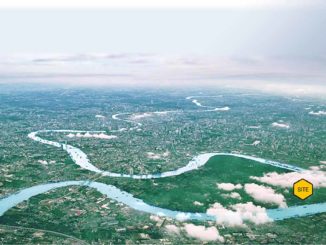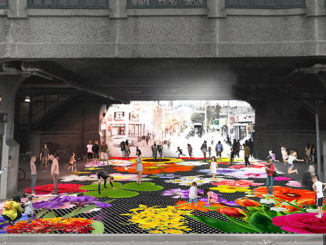
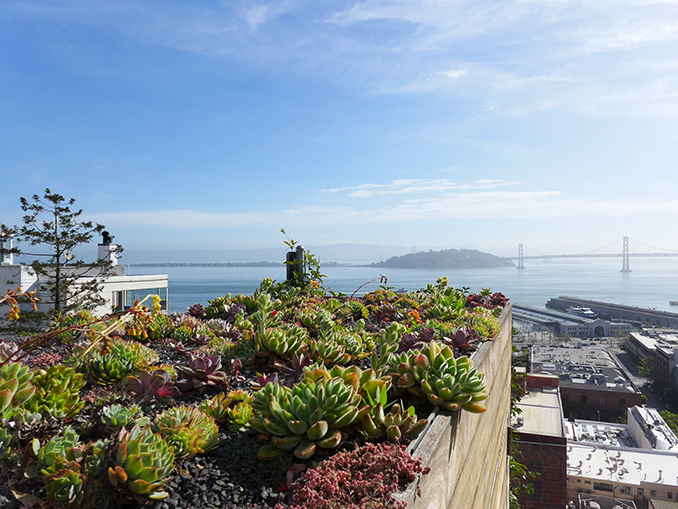
The Telegraph Hill Residence landscape design expands and dramatizes the entry sequence and exterior spaces of an existing hillside residence by dissolving the barrier between the user and the expansive landscape beyond. A carefully choreographed entry sequence along an entry stair welcomes the visitor, creating moments for pause, respite and drama while negotiating the substantial grade change from the sidewalk to the front door. Along the sequence, clean walls of corten steel contrast with raw cliff face and plantings, while planes of glass at the end of the overlooks bring the user within a visceral proximity to the cliff drop underneath. At the rear of the house, a sheltered shade garden, comprised of soft plantings, blossoming trees, and permeable materials provides a quiet refuge. The design elicits visceral responses to the landscape as a source of both introspection and connection to the larger environment.

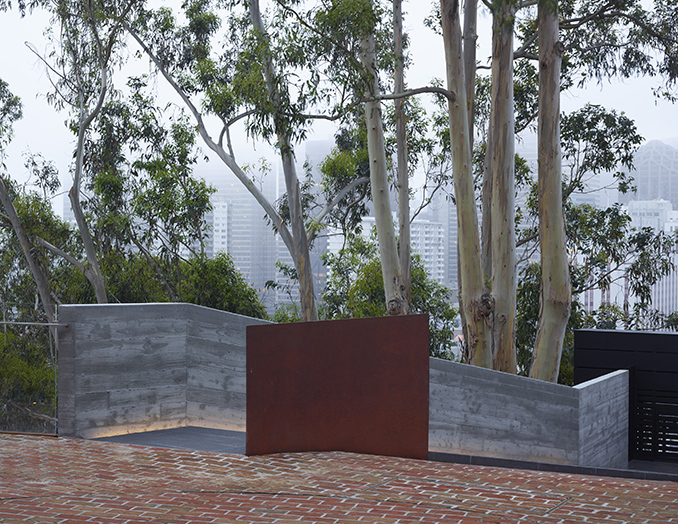
SITE + CLIENT
The clients had relocated to a dense San Francisco neighborhood from a bucolic suburban property, wishing to have a more urban lifestyle. After completing the design process with the landscape architect for a house on another site, they found and purchased this unique property for its incredible views and location on the edge of Telegraph Hill. The existing house is perched on a 9,600 -square-foot lot along a steep unbuildable ravine looking East over the Bay Bridge. The landscape architects had worked with the client on several other projects and understood that the couple wished to create a private modern home and garden. However, because of the historic nature of the site and neighborhood, including the preservation of the historic street right-of-way that now forms the terrace on the east side of the residence, the renovation was subject to intense design review and scrutiny by the local neighborhood group and planning department, who required the clients to preserve the historic character of the existing house, along with the brick paving and the historic brick walls at the edge of an abandoned street right of way. At the same time, the architect proposed lowering the garage and basement six feet to provide additional usable square footage for the house and to reduce the slope of the driveway, providing a level area at the garage for cars to turn around and exit safely to the street. This elevation change required completely reconfiguring the driveway access to the garage and the residence; no small feat given the requirements for use of brick, the proximity of the driveway to the ravine and the neighbors’ foundations.
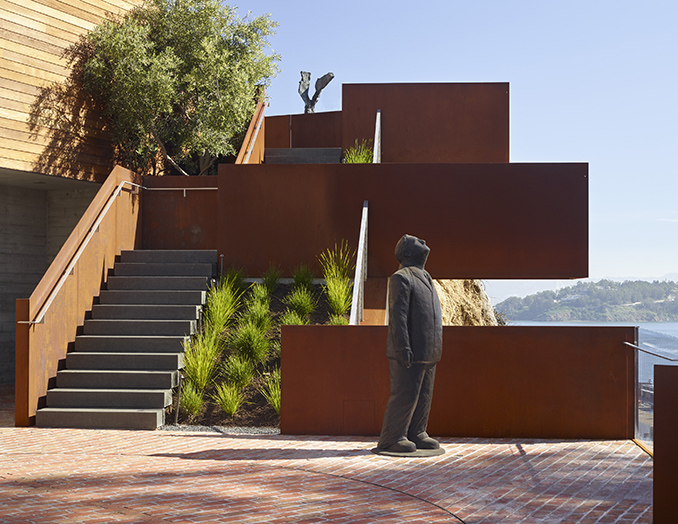
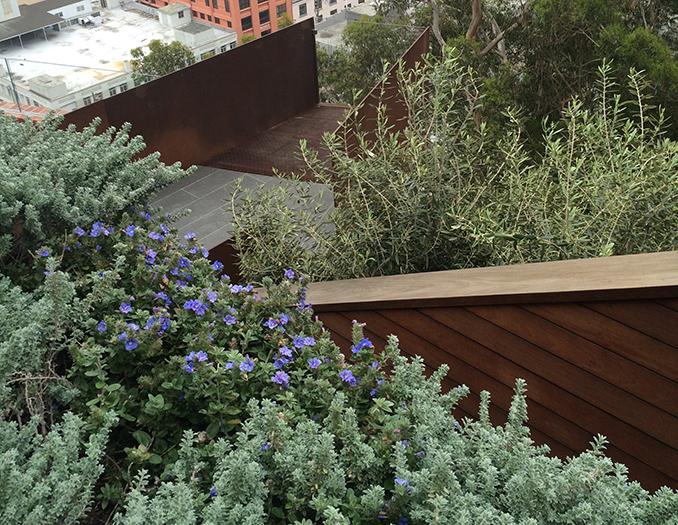
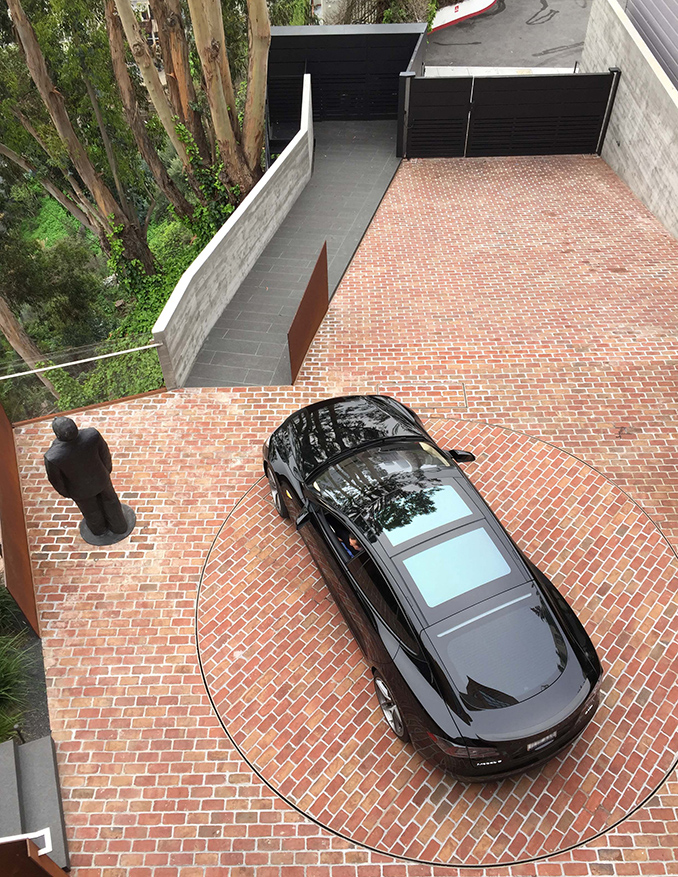
PHILOSOPHY + DESIGN
The project draws inspiration from the landscape as a source of both prospect and refuge. In designing the front entry stair, the landscape architects took advantage of the challenging spatial conditions to create the additional terrace space necessary to access the views from the site, and to design an experiential journey leading from the driveway gate to the front door. A carefully choreographed entry sequence leads the user along a sloped stone pathway and up the stair, which ascends through lush garden spaces that open out to overlooks and terraces offering wide views of the surrounding landscape. The corten steel overlooks cantilever precipitously at the edge of the cliff, terminating in sheets of glass that dissolve the barrier between the user and the expansive landscape beyond. While the overlooks invite the user to enjoy the views, a porous ground plane of steel grating intensifies the psychological and physical experience by permitting views downward to the substantial drop below. Stepping from solid ground onto one of these overlooks triggers a variety of responses, from a sense of floating to one of vertigo.
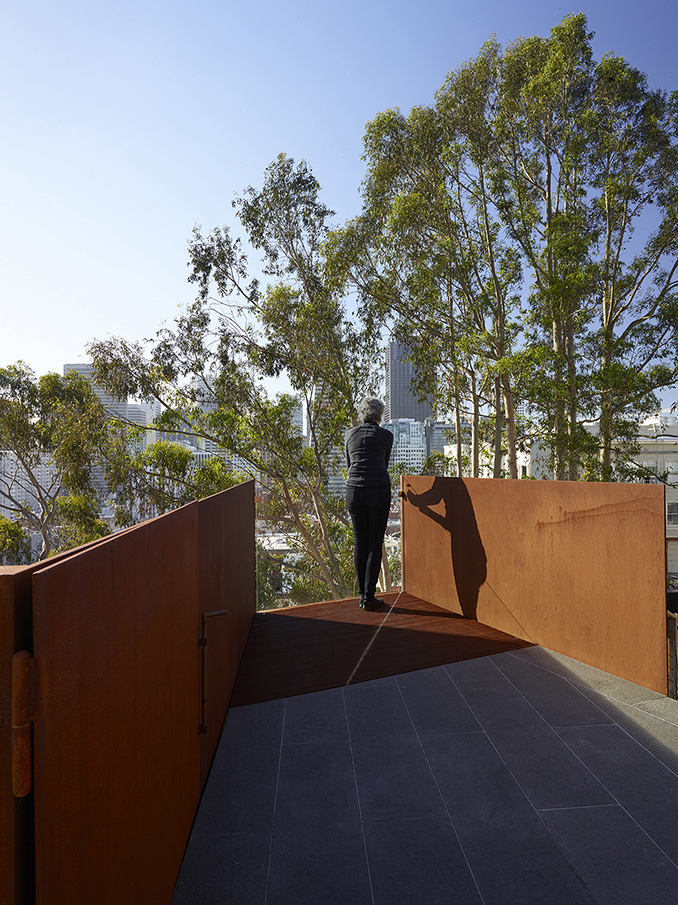
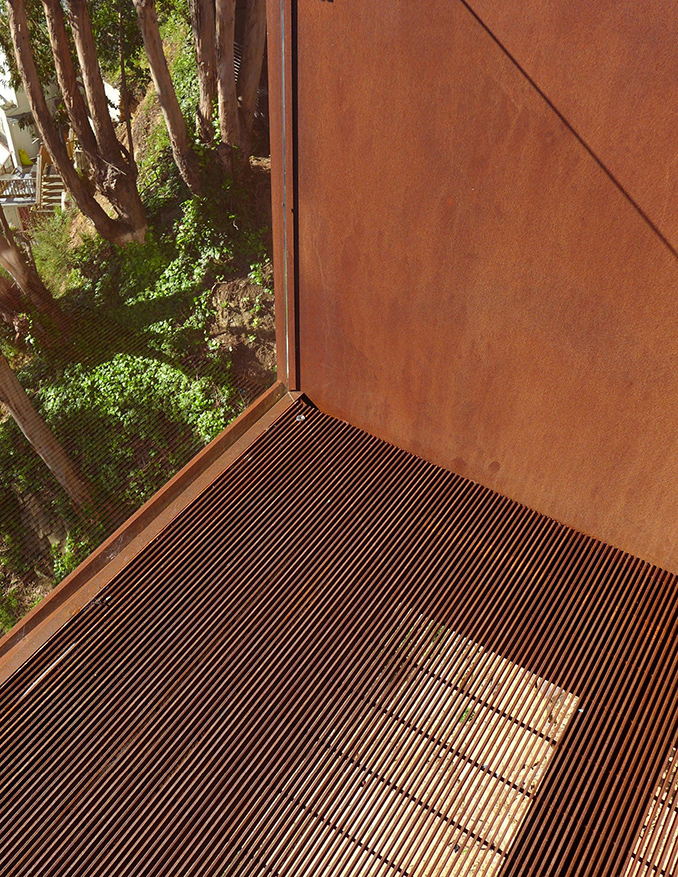
The shade garden at the rear of the house buffers the residence from the adjacent neighbors’ home. Special care was taken to preserve and restore the existing walls and trees, which had significant unearthed potential. The space is accessible from the house, acting as a refuge from the wind and fog and opening up the residence for sheltered outdoor use. At the focal point of the garden stands a weathered corten steel wall that anchors the decomposed granite and highlights the vibrancy of the flowering dogwood trees, and screening a fourteen-foot concrete retaining wall beyond. The garden’s design makes space for a meditative experience for daily yoga, while also acting as a spillover space for parties—a valuable contribution to the feeling of a private green sanctuary in an urban context.
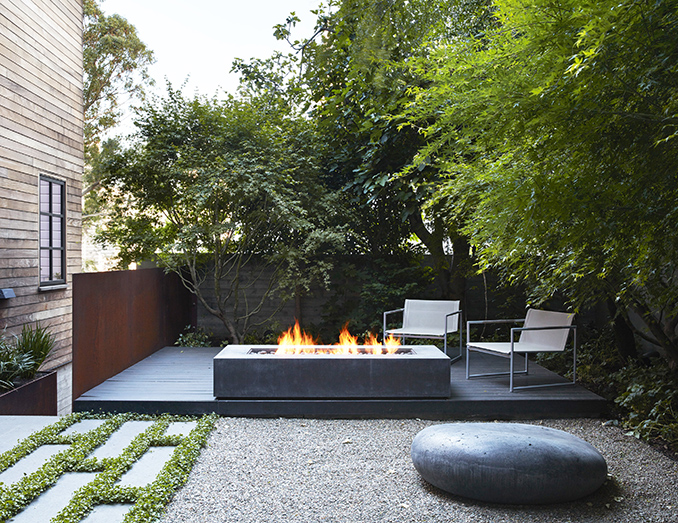
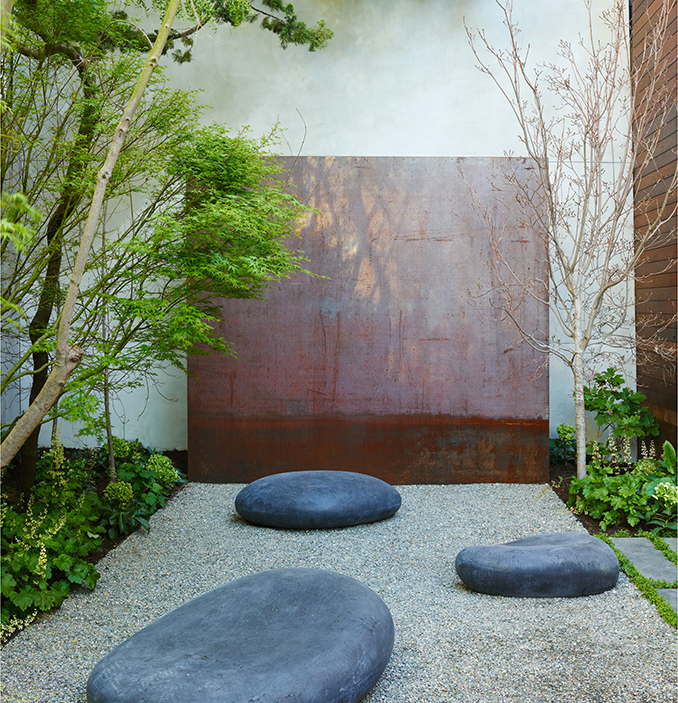
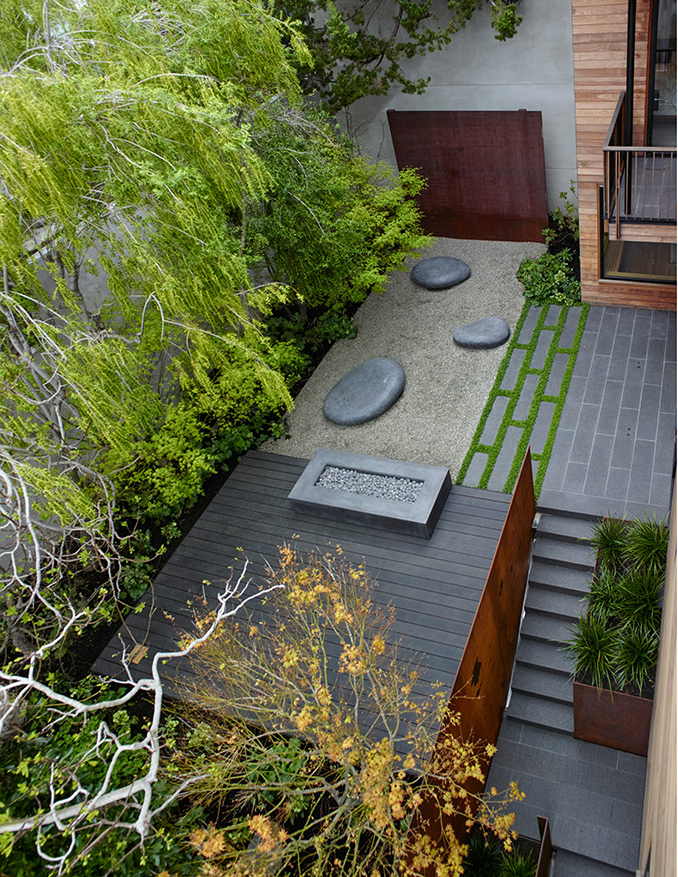
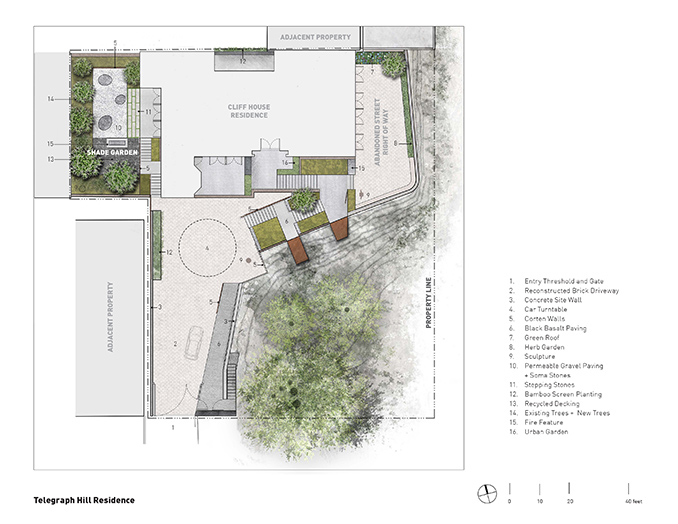
Telegraph Hill Residence
Design Team
Andrea Cochran Landscape Architecture team | Andrea Cochran FASLA, Jeremy Tsai, Horng-Sheng Tu ASLA, Sarah Keizer, Amir Kunin
Architect | Lundberg Design
Civil Engineer/MEP | Firma Design Group
Structural Engineer | GFDS Engineers
Irrigation Designer | Russell D. Mitchell and Associates
Mechanical/Plumbing | Axiom Engineers
Electrical Engineer | Summit Engineers
Lighting Designer | Banks/Ramos
AV Designer | Audio Visual Engineers
Construction Team
General Contractor | Van Acker Construction Associates
Landscape Contractor | Curtis Edward Dennison Landscape
Paving and Stone Contractor | Omni Stone Masonry
Metal Fabricators | Product and Design & Complete Fabrications
Concrete contractors | Adorno Construction
Deck fabrication | Rushton & Hawley
Photography | Marion Brenner

